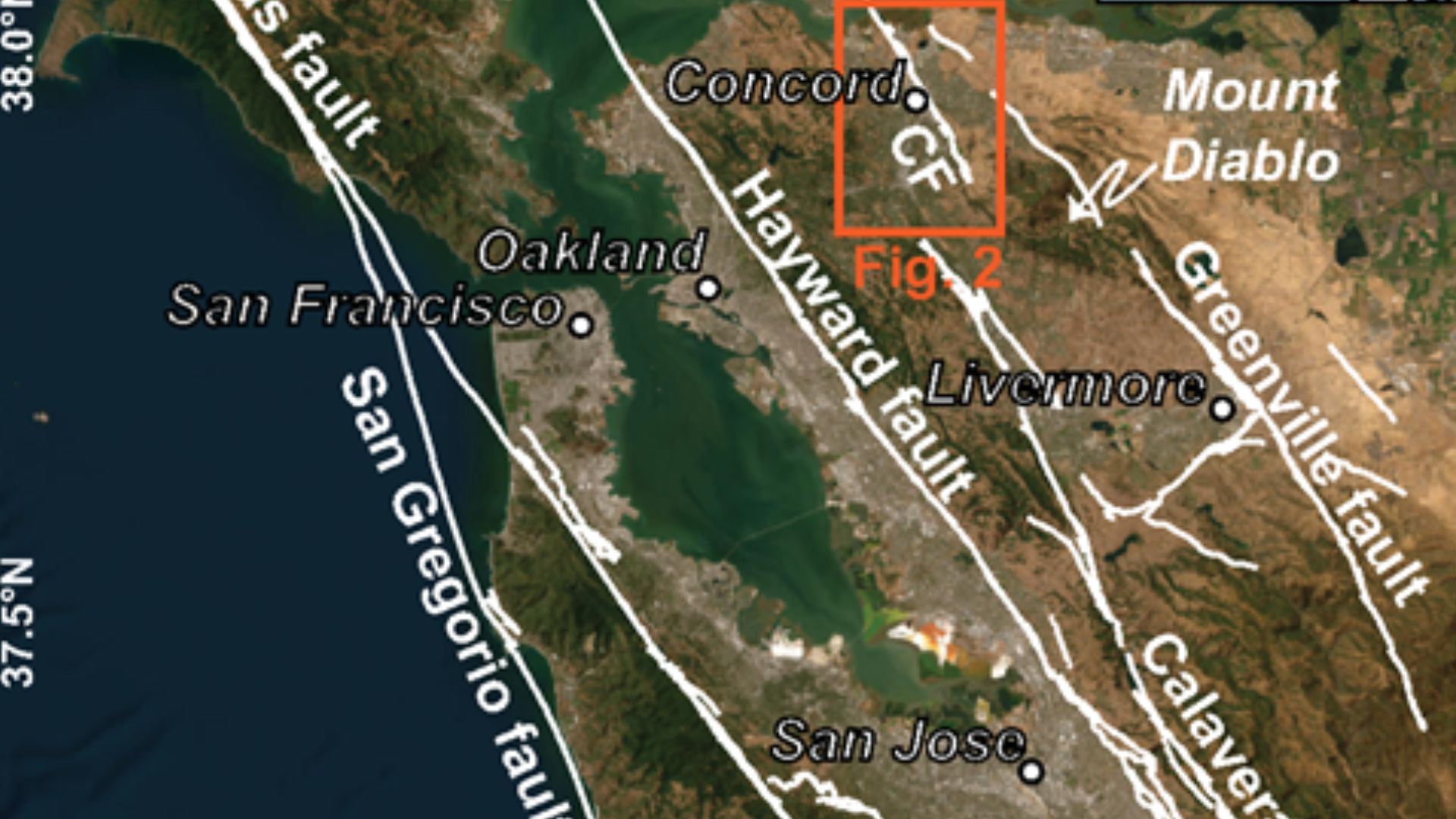New California Fault Line Segment Uncovered

Understanding the New Risks of the Concord Fault
A recent study by the U.S. Geological Survey has revealed that a section of the Concord Fault in California is actively creeping, potentially increasing the risk of large earthquakes in residential areas. This finding challenges previous assumptions about the fault's location and highlights the need for updated seismic hazard assessments.
Why It Matters
The Concord Fault, which stretches approximately 20 kilometers (12.4 miles), could produce earthquakes of magnitude 6.7 or higher. Given that it passes through urban areas such as Walnut Creek and Concord, as well as near Mount Diablo and Suisun Bay, the potential for widespread damage is significant. In 1955, a 5.4-magnitude earthquake along this fault caused substantial destruction, underscoring the risks associated with seismic activity in these regions.
With this new understanding, the California Geological Survey may classify the fault as part of an official Earthquake Fault Zone. This designation could influence real estate disclosures, construction regulations, and long-term urban planning efforts, ensuring that communities are better prepared for potential seismic events.
What Researchers Have Discovered
The study focused on a 7-kilometer segment of the fault known as the Madigan Avenue strand. By examining more than 30 locations with visible curb and sidewalk displacements, researchers found that the fault is moving at a rate of about 3 millimeters per year. This movement aligns with the previously mapped northern half of the fault, which has been known to creep steadily over time.
However, the southern section of the Concord Fault remains less understood. The researchers discovered that curbs in this area have shifted by as much as 18 centimeters since their installation, indicating significant movement over the past 60 years. Previously, the creeping fault line was believed to run along the edge of Lime Ridge, but it has now been identified as passing through neighborhoods and even Valle Verde Elementary School in Walnut Creek.
This shift means the fault is approximately 400 meters west of its previously assumed location. Improved identification of the fault’s position allows for a more accurate assessment of seismic risks, enabling better preparation and response strategies in the region.
Expert Opinions on the Findings
Roland Burgmann, a professor of earth and planetary science at the University of California, Berkeley, emphasized the importance of accurately mapping faults in urban areas. He noted that creeping faults can cause gradual damage to infrastructure, as seen in the costly renovations of the Berkeley Memorial Stadium due to fault creep on the Hayward fault.
Burgmann also pointed out that the original geological mapping missed the current active fault strand. He suggested that the evidence for the old map location was not strong, and there may be older, inactive faults in the area. Determining the depth of the creep remains a challenge, adding uncertainty to the seismic hazard posed by the Concord Fault.
Andrew Alden, an Oakland-based geologist, highlighted that while creeping faults can release some energy between large earthquakes, they still cause continuous damage through shifted curbs and cracked pavements. He noted that the Concord Fault is entirely occupied by human structures, unlike the Hayward fault, which has more vacant land that is less affected by seismic activity.
Alden also stressed the importance of further research to identify any previously undocumented fault strands, as the region's seismic hazards may be more complex than currently understood.
What Comes Next
The discovery of the actively creeping section of the Concord Fault may prompt action from the California Geological Survey. A formal designation as an official earthquake fault zone could impact real estate transactions, land use policies, and building codes. This step would ensure that communities are better informed and equipped to manage seismic risks.
As the study continues to unfold, ongoing research and public awareness will play critical roles in mitigating the potential impacts of future earthquakes along the Concord Fault.
Post a Comment for "New California Fault Line Segment Uncovered"
Post a Comment